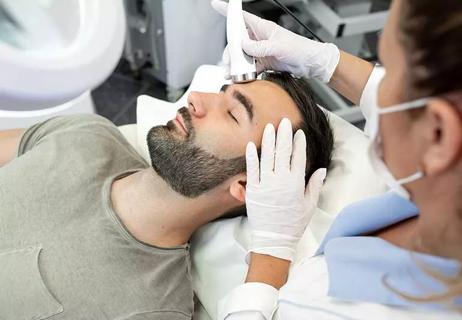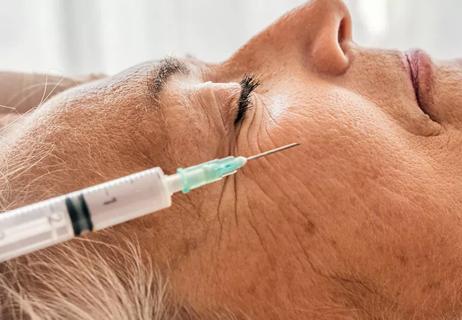Using tape to smooth wrinkles may be a temporary fix, but there are still risks

We use tape for all kinds of things — to wrap gifts, fix broken glasses or act as a makeshift lint roller.
Advertisement
Cleveland Clinic is a non-profit academic medical center. Advertising on our site helps support our mission. We do not endorse non-Cleveland Clinic products or services. Policy
But what about using tape on your wrinkles? Or to give you a mini facelift?
While the idea of face tape has been around for years, the facelift hack has seen a surge in popularity thanks to makeup artists touting the technique on TikTok and other social media platforms.
But before you unroll that Scotch® tape and get to work on your face, read on for what plastic surgeon Martin Newman, MD, has to say about the risks involved and if face taping really works.
Dr. Newman says there are two different kinds of face tape.
The first one involves using tape and a string.
“You take two pieces of tape with strings attached,” he explains. “You place the tape near each of your temples and then you pull and tie the strings behind your head.”
This is meant to give you a lifted look around your eyes and cheeks. Those who do this technique will need to hide the string with their hair.
“This method can be helpful to change a person’s appearance temporarily, for example, if you’re posing for a picture,” says Dr. Newman. “But close up, it doesn’t work because you can see the tape and/or strings.”
The second way is using individual pieces of tape to smooth out wrinkles.
“The idea here is that you actually take a piece of tape and place it on wrinkles,” says Dr. Newman. “Then you go to bed and wake up in the morning. When you remove it, the wrinkle goes away.”
Advertisement
While most face taping focuses on the area around the eyes, the method has been used on the neck, forehead, jaw and cheekbones.
Yes … but it’s a temporary fix.
“Your skin is soft and somewhat moldable,” says Dr. Newman. “So, you can put a piece of tape on your face and it will make the wrinkle vanish just because you’re making an impression on the skin.”
But once you remove the tape?
“Your wrinkles will come back,” he states. “It’s a short-lived phenomenon.”
While it may seem harmless to put a piece of tape on your skin, there are some concerns, notes Dr. Newman.
“The tape can take off the stratum corneum, the outer layer of your skin,” he explains. “You’re also using toxic glues on your face, which can cause dermatitis or irritation to the skin. You could also cause an allergic reaction.”
There’s a risk of causing blisters, too, which can lead to scarring.
Dr. Newman advises that if you’re going to try face tape, you should look for tape that’s specifically designed for that purpose. There are numerous brands available online and at beauty stores. And make sure you follow the instructions provided by the manufacturer.
Bottom line? Don’t use any old tape lying around your house.
There are plenty of tried-and-true methods for reducing wrinkles says Dr. Newman. Here are a few options currently available:
“Also, think about your lifestyle,” advises Dr. Newman. “Avoid the sun, avoid toxins and drink plenty of water.”
Advertisement
Learn more about our editorial process.
Advertisement

Topical treatments — and even some cosmetic procedures — may help reduce the appearance of this crinkled-paper look

Though popular with influencers and celebrities, there’s little research to back up claims that they work

This noninvasive procedure can help aging skin by boosting collagen production

Your blood vessels shrink and your skin forms wrinkles to help you grip objects

Try limiting heat styling and eating a healthy diet instead

Lifestyle changes, neck exercises, injections and surgery can all help improve turkey neck

A plastic surgeon explains your cosmetic injection options

What you can do for laugh lines and facial creases

Start having sex about 72 hours before ovulation, then at least every other day during your fertile window

Attachment theory suggests that your earliest relationships shape connections throughout your life

It isn’t a recognized mental health disorder, but research shows that problematic social media use can negatively affect your mental health, self-esteem and sleep